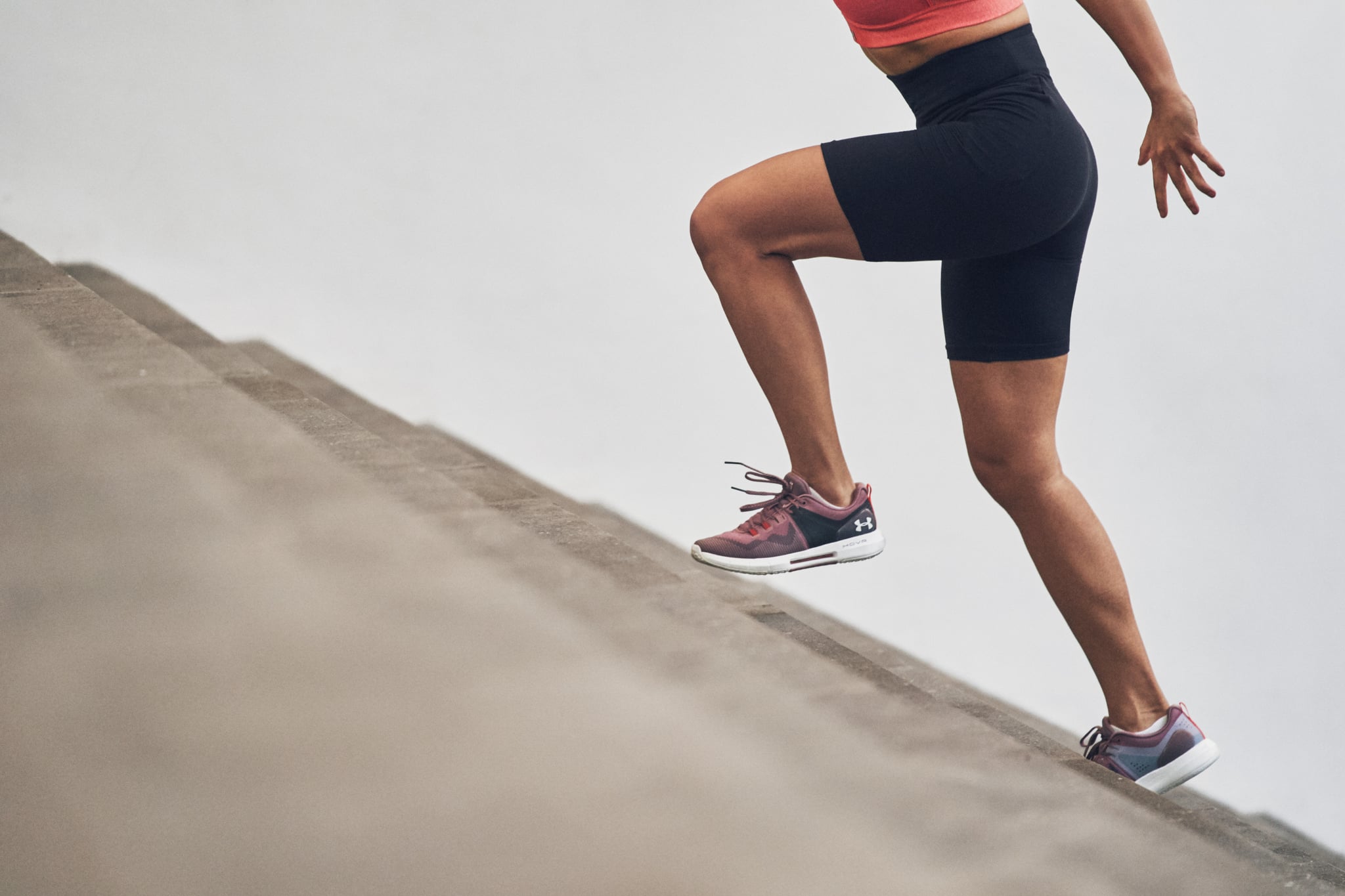
I get a lot of reactions when I tell people I’m a runner, but one of the most common responses to my love of the sport or the volume of races I’ve run is a comment about my knees. Usually it’s asking me if I’m worried about my knees or if I knew running could be bad on the knees. I typically smile and nod — yes, I’ve heard that running is hard on the knees. No, that hasn’t stopped me yet.
And yet, I have experienced these little aches and pains in my running career, even after switching to race-ready sneakers like the UA HOVR™ Infinite 2 GRD ($130). That’s why I turned to Daniel Giordano, PT, DPT, CSCS of Bespoke Treatments to learn exactly how runners can get stronger and protect their knees.
“Most runners tend to experience pain in the knees when a failure happens somewhere else in the body during your gait, leading to an increase in compression force at the knee,” explained Giordano. Basically, that knee pain might be a result of weakness somewhere else in the body. Giordano said that over time, this can lead to traumatic injury at the knee or an overuse injury simply due to the repetition from running.
He went on to explain that preventing knee pain and injury actually occurs outside of running, and that runners should focus on ankle and hip mobility to start. What’s more, strengthening the hips and core makes the whole body more mobile, strong, and stable. “In theory, by creating a more stable core or pillar, you will reduce your risk of injury and be a stronger runner,” he said.
Runners can start by building those strong bases to protect knee injury in four ways: mobility work for joints, isometric core strengthening, glute strengthening, and hip strengthening. Thankfully, Giordano broke up each area of focus and provided solid strength-building moves to try for each.
Mobility Work: Improves the Range of Motion of Your Joints
Move 1: Quadruped Rocking
- Start on all fours. Tuck your big toe under, creating a slight stretch in the arch of your foot.
- Rock your butt toward your heels. Pause and rock forward slightly.
- Repeat 10 to 15 times.
Move 2: World’s Greatest Stretch
- Start in a high-plank position. Take your right foot and put it outside of your right hand. Drop your left knee to the ground and tighten your left glute.
- Drop your right elbow toward the ground, slightly rotating it toward your left hand. Pause when you feel the stretch in the back of your right thigh. Tuck your bottom rib under and rotate your right hand toward the sky, following your hand with your eyes.
- Pause at the top, then return to the starting position.
- Repeat 10 to 15 times.
Isometric Core Strengthening: Strengthens the Core and Keeps Your Pelvis Stable
Move 1: Plank
- Lie on your stomach and prop yourself up on your elbows. Lift your knees off the ground (or keep them on the ground if lifted knees is too difficult).
- Looking straight down, push through your elbows with your chest away from the ground so you’re in an extended push-up-like position.
- Tighten your glutes, quads, and butt. Hold this position for 15 to 30 seconds.
- Repeat three to five times.
Move 2: Side Plank
- Lie on your side with your knees bent and on the ground. Prop yourself up on your elbow, lifting your bottom hip off of the ground and creating a straight line from your head to your knees. Straighten your legs and lift your knees off of the ground, creating a straight line from your head to your toes. Hold for 15to 30 seconds.
- Repeat three to five times.
Glute Strengthening: Builds Strength So You’re Gentler on Your Knees
Move 1: Fire Hydrants
- Start on all fours. Keeping your knee bent, lift one leg out to the side (yep, just like the name implies — as if you were a dog peeing on a fire hydrant). Pause at the top of the lift without leaning too much into your stable knee, then return to the starting position.
- Repeat 10 to 15 times on each leg.
Move 2: Donkey Kicks
- Start on all fours. Lift one foot toward the sky, keeping your knee bent, while keeping your heel bent toward your glutes. Once you feel your glutes and hamstring contract, pause, and then return to the starting position.
- Repeat 10 to 15 times on each leg.
Standing Position Hip Strengthening: Builds Strength in Single-Leg-Stance Positions
Move: Lateral Stepping
- Stand in an athletic stance — upright, feet hip-width apart with a slight hinge at the hips. Focus on keeping your stance leg (your engaged leg) as still as possible in order to mimic the stance position of your gait — aka how you walk, or in this case, run.
- Tap your alternate foot out to the side and return to the starting position.
- Perform 10to 15 reps on each side.
